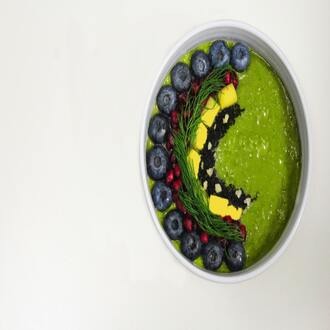Transcription How to structure daily meals?
After having learned how to calculate our daily caloric needs and the approximate amounts of carbohydrates, proteins and fats that we should consume daily, we must distribute the meals throughout the day, taking into account those that should be taken before and after training.
When we begin to structure our meal plans we must also consider our eating habits, so that the changes we have to introduce in our diet, are not too abrupt and we can adapt to them without major setbacks.
Let's define the number of daily meals
In addition to the two light meals that include carbohydrates and proteins before and after training, we must plan at least three more meals, to ensure periodic carbohydrate and protein recharges that allow the total recovery of muscle mass.
If the athlete performs the training session around nine o'clock in the morning, the meals could be planned as follows:
- Adequate breakfast, around 7:30 a.m., with enough carbohydrates, proteins and liquids to also serve as a pre-workout meal.
- 2°- Post-workout meal around 11:00 am.
- 3°- Main meal of the day around 1:30 in the afternoon.
- 4°- Snack around 4:30 in the afternoon.
- 5°- Dinner around 7:00 in the evening.
- 6°- Light snack around 9:00 pm.
Let us distribute throughout the day the total calories demanded by the athlete.
For the athlete to have enough energy for the development of physical activities during training and promote their recovery and preparation for the next day's training, energy intake should be properly distributed throughout the day.
In the following table we show a possible distribution of the calories that each of the meals should provide throughout the day; for an athlete who requires 2165 kilocalories daily and trains in the early hours of the morning.
What foods should always be included in the daily diet?
- A carbohydrate ration should be included in at least five meals a day. For example: oatmeal, breakfast cereals, bread, rice and potatoes. Whenever possible, whole-grain foods should be consumed.
- Three to four servings of skim milk, yogurt or cottage cheese should be consumed.
- Plan at least three daily servings of whole natural fruits, chopped or in juices made at the moment and without added sugar.
- Plan at least three daily servings of natural or steamed vegetables.
- Include servings of approximately 30 grams of animal protein in five meals throughout the day, prioritizing pre-workout and post-workout meals.
- Include three servings of olive oil, oily fish or other vegetable oils. Oil intakes should not be planned for pre- and post-workout meals.
- In addition, four to five servings per week of legumes and nuts should be included in the diet.
How should meal plans be described?
- Menus should include a detailed description of each product. For example: skimmed milk, whole wheat bread, virgin olive oil, hake fish, among others.
- Quantities per serving should be described, classified into small, normal and large portions.
- The culinary processes should be specified (cooking, roasting, etc.), the means of preparation (oven, microwave, etc.), as well as the approximate times.
- The condiments and approximate quantities for each dish should also be specified.
structure food




